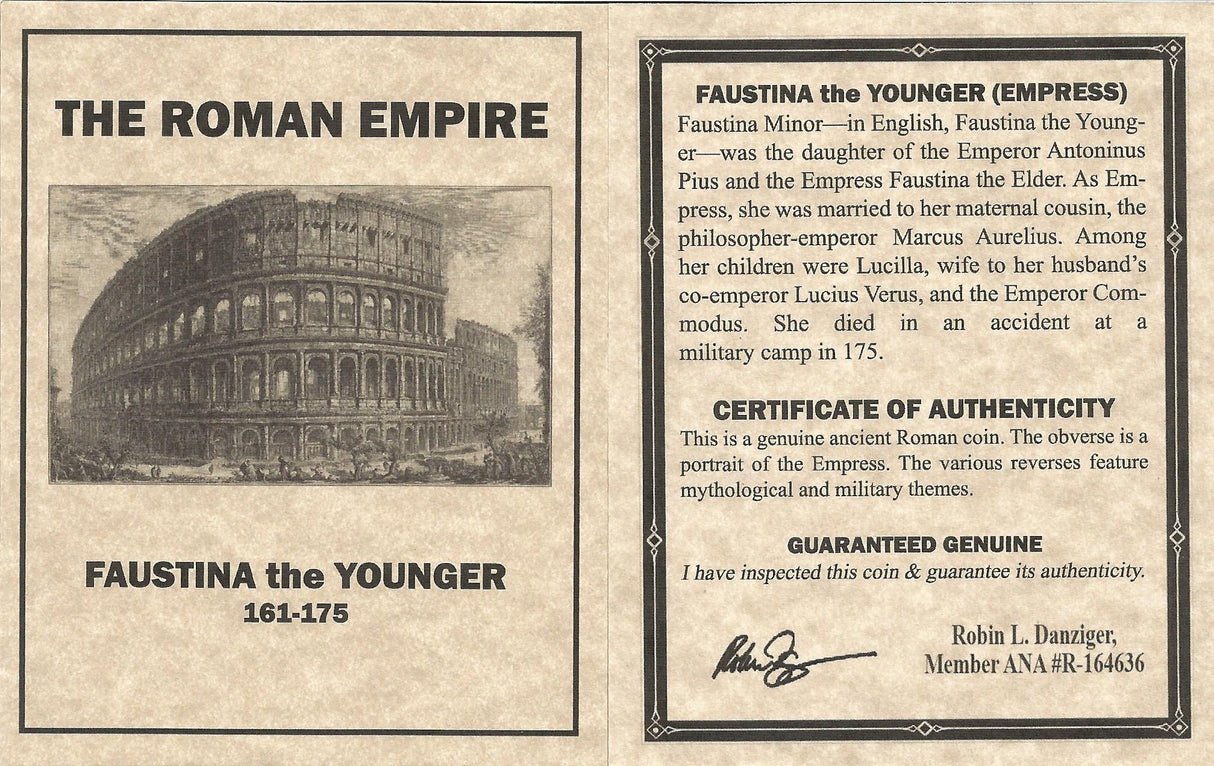 Image 1 of 5
Image 1 of 5

 Image 2 of 5
Image 2 of 5

 Image 3 of 5
Image 3 of 5

 Image 4 of 5
Image 4 of 5

 Image 5 of 5
Image 5 of 5






Roman Bronze Coin of Constantine II (about 1,700 years ago)
This is an ancient Roman bronze coin featuring Constantine II, who became emperor after his father Constantine the Great, the ruler who officially embraced Christianity in the Roman Empire.
Coin Description:
Front side: Features the portrait of Constantine II
Back side: Depicts Roman imperial imagery typical of the era
Technical Details:
Bronze coin minted in London
Certified by NGC (Numismatic Guaranty Corporation)
Minted during 316-340 CE
Historical Significance: Constantine II was the first son of Constantine the Great and his second wife, Fausta. He was "born in the purple"—meaning his father was already Emperor when he was born—which contributed to his reputation as a privileged child. This coin represents the continuation of the Constantinian dynasty that transformed the Roman Empire by establishing Christianity and creating Constantinople (modern Istanbul, Turkey) as a new imperial capital
This is an ancient Roman bronze coin featuring Constantine II, who became emperor after his father Constantine the Great, the ruler who officially embraced Christianity in the Roman Empire.
Coin Description:
Front side: Features the portrait of Constantine II
Back side: Depicts Roman imperial imagery typical of the era
Technical Details:
Bronze coin minted in London
Certified by NGC (Numismatic Guaranty Corporation)
Minted during 316-340 CE
Historical Significance: Constantine II was the first son of Constantine the Great and his second wife, Fausta. He was "born in the purple"—meaning his father was already Emperor when he was born—which contributed to his reputation as a privileged child. This coin represents the continuation of the Constantinian dynasty that transformed the Roman Empire by establishing Christianity and creating Constantinople (modern Istanbul, Turkey) as a new imperial capital
This is an ancient Roman bronze coin featuring Constantine II, who became emperor after his father Constantine the Great, the ruler who officially embraced Christianity in the Roman Empire.
Coin Description:
Front side: Features the portrait of Constantine II
Back side: Depicts Roman imperial imagery typical of the era
Technical Details:
Bronze coin minted in London
Certified by NGC (Numismatic Guaranty Corporation)
Minted during 316-340 CE
Historical Significance: Constantine II was the first son of Constantine the Great and his second wife, Fausta. He was "born in the purple"—meaning his father was already Emperor when he was born—which contributed to his reputation as a privileged child. This coin represents the continuation of the Constantinian dynasty that transformed the Roman Empire by establishing Christianity and creating Constantinople (modern Istanbul, Turkey) as a new imperial capital
Constantine II (Latin: Flavius Claudius Constantinus; 316–340) was Roman emperor from 337 to 340. The son of the emperor Constantine I, he was proclaimed caesar by his father shortly after his birth. He was associated with military victories over the Sarmatians, Alamanni and Goths during his career, for which he was granted a number of victory titles.[4] He held the consulship four times – in 320, 321, 324, and 329.
Constantine I had arranged for his sons to share power with their cousins Dalmatius and Hannibalianus, but this was not accepted by Constantine II and his brothers. As a result, Constantine II's brother Constantius II ordered the killings of numerous male relatives following Constantine I's death, including Dalmatius and Hannibalianus, thus eliminating any possible opponents to the succession of Constantine I's sons. Constantine II then ascended to the throne alongside his two younger brothers, ruling Gaul, Hispania, and Britain. However, his belief in his rights of primogeniture and attempts to exert them over his youngest brother Constans caused conflict, which ended with his death in a failed invasion of Italy in 340. Constans subsequently took control of Constantine's territories, with the latter being subjected to damnatio memoriae.

















